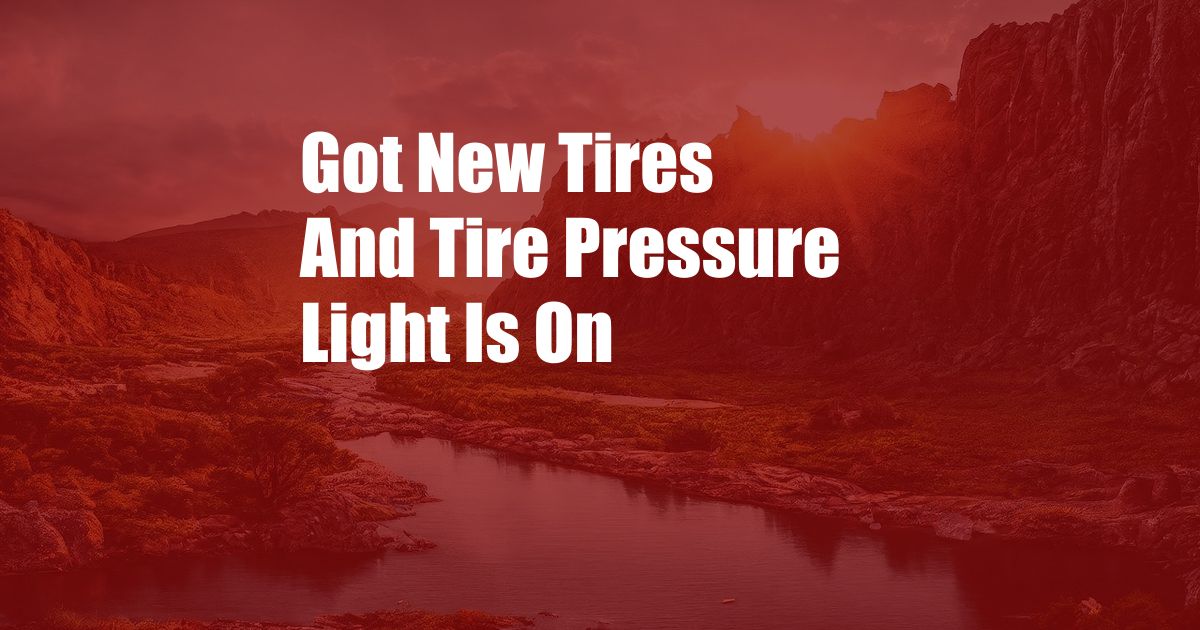
Got New Tires and Tire Pressure Light Is On? Here’s What to Do
I recently purchased a new set of tires for my car. To my surprise, shortly after having them installed, the tire pressure light illuminated on my dashboard. Concerned, I pulled over to check the tire pressure. However, to my dismay, each tire appeared to be adequately inflated.
Puzzled, I decided to delve into the issue further, leading me on a quest for answers. In this article, I’ll share my findings, offering a comprehensive guide on why your tire pressure light might be on after installing new tires and what steps you can take to resolve the situation.
Tire Pressure Monitoring System (TPMS)
Overview and Functioning
Most modern vehicles are equipped with a Tire Pressure Monitoring System (TPMS). This system utilizes sensors installed inside each tire to monitor the air pressure. If any tire’s pressure falls below a predetermined threshold, the TPMS triggers a warning light on the dashboard to alert the driver.
TPMS serves a crucial safety function. Underinflated tires can compromise handling, increase fuel consumption, and lead to premature tire wear. By prompting drivers to address low tire pressure, TPMS helps prevent tire-related accidents and extends the lifespan of your tires.
Why Is My Tire Pressure Light On After Installing New Tires?
Resetting the TPMS
After installing new tires, it’s essential to reset the TPMS. The system needs to be recalibrated to recognize the new tire pressures. Failure to reset the TPMS can lead to the persistent illumination of the tire pressure light, even if the tires are adequately inflated.
Sensor Issues
Faulty or damaged TPMS sensors can also trigger the tire pressure light. Sensors may malfunction due to age, corrosion, or physical impact. In such cases, replacing the affected sensor is necessary to resolve the issue.
Improper Tire Inflation
Despite your initial assessment, it’s possible that some tires may still be underinflated. Use a reliable tire pressure gauge to double-check the pressure of all tires. Ensure that they meet the recommended levels specified in your vehicle’s owner’s manual or on the tire sidewall.
Valve Stem Leaks
Leaks in the valve stem can lead to a gradual loss of tire pressure. Inspect the valve stems for any signs of damage or corrosion. If leaks are detected, replace the faulty valve stems to restore proper tire inflation.
Battery Failure
TPMS sensors are powered by small batteries. Over time, these batteries can weaken or fail, resulting in the malfunctioning of the system. If other troubleshooting methods fail to resolve the tire pressure light issue, consider replacing the batteries in the TPMS sensors.
Tips and Expert Advice
Consult Your Vehicle Owner’s Manual
Refer to your vehicle’s owner’s manual for specific instructions on resetting the TPMS or troubleshooting tire pressure light issues. It will provide detailed guidance tailored to your particular make and model.
Use a Quality Tire Pressure Gauge
Invest in a high-quality tire pressure gauge to accurately measure tire pressure. Cheap or unreliable gauges can provide inaccurate readings, leading to incorrect troubleshooting.
Visit a Tire Shop or Mechanic
If you’re unable to resolve the tire pressure light issue on your own, don’t hesitate to consult a reputable tire shop or mechanic. They have the expertise and equipment to diagnose and fix the problem effectively.
Frequently Asked Questions (FAQs)
- Q: Can I reset the TPMS myself?
- A: Yes, in most vehicles, you can reset the TPMS by following the instructions provided in your owner’s manual.
- Q: How often should I check my tire pressure?
- A: It’s recommended to check your tire pressure at least once a month, especially before long trips.
- Q: What is the ideal tire pressure for my vehicle?
- A: The recommended tire pressure for your vehicle can be found in the owner’s manual or on the tire sidewall.
- Q: Can I drive with the tire pressure light on?
- A: Driving with underinflated tires can be dangerous. It’s best to address the issue promptly to ensure optimal safety.
Conclusion
Understanding the reasons behind a persistent tire pressure light after installing new tires is essential for maintaining the safety and performance of your vehicle. By following the troubleshooting tips outlined in this article, you can effectively resolve the issue and restore proper tire pressure monitoring.
Remember, if the problem persists or you encounter any difficulties, don’t hesitate to seek professional assistance from a tire shop or mechanic. Ensuring accurate tire pressure is a crucial aspect of vehicle maintenance, contributing to enhanced driving safety and longevity.
Are you interested in learning more about tire pressure monitoring systems or other automotive maintenance tips? Continue exploring our blog for a wealth of informative articles and expert advice.